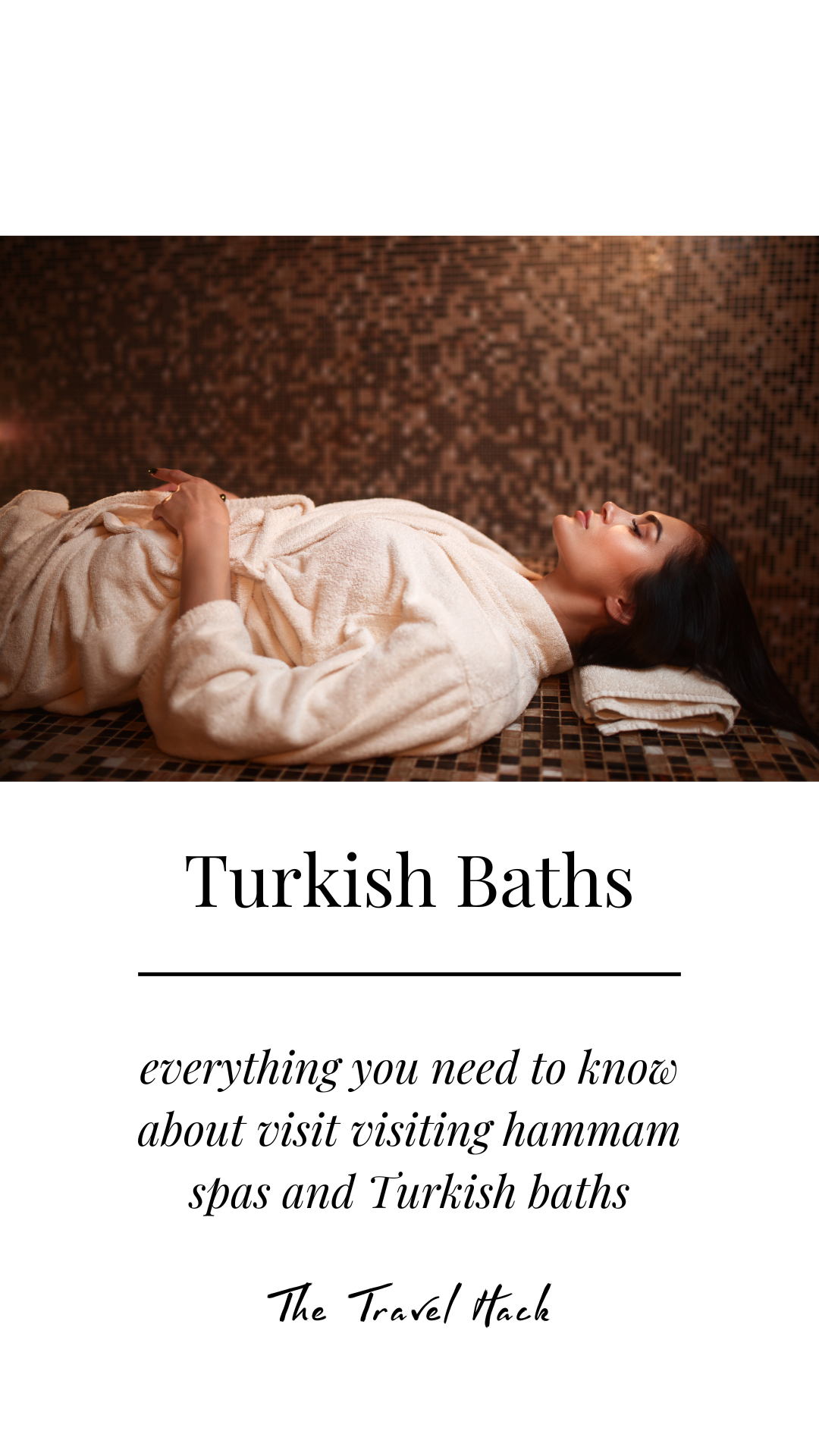If you’re going on holiday to Turkey then you cannot miss the opportunity to visit a traditional Turkish bath. Most hotels will offer this experience and there are often hammam spas within your hotel complex.
If you’ve got a spare afternoon while you’re on holiday, trust me when I say you cannot miss the Turkish baths!
Holidays to Turkey are getting more and more popular for us Brits. In fact, I’m going for the second time at the end of February and I can’t wait! My first trip was to Phokaia Beach Resort and it was dreamy! It’s such a beautiful country, the weather is perfect, the beaches are stunning and it’s a very affordable destination. Turkish Airline booking is great and you get much more for your money at a Turkish hotel compared to Spain or Greece. So if you’re on the fence about booking a holiday to Turkey, just go for it! And make sure you visit a hammam while you’re there!
What is a Turkish Bath?
Hammam spas and Turkish baths are traditional bathing experiences that have been an integral part of Turkish and Middle Eastern cultures for centuries. Here’s everything you should know about them:
History of Turkish baths
Turkish baths have a long history dating back to ancient times, influenced by Roman bathing traditions and later evolved under Ottoman rule. Hammams specifically refer to the Turkish variant of the public bathhouses.
Traditional Turkish bathhouses are architecturally stunning with domed ceilings, marble walls, and intricate tilework. Seriously, they put our public swimming pools to shame and are nothing like the public swimming baths in the UK! They typically consist of several chambers including a hot room (caldarium), a warm room (tepidarium), and a cool room (frigidarium).
Historically, Turkish baths were not only places for personal hygiene but also served as social hubs where people gathered to relax, socialise, and conduct business.
What happens in a Turkish bath?
Visiting a hammam or Turkish bath involves a cleansing ritual that includes steaming, scrubbing, and massage. The process usually begins with relaxation in the warm room to allow the body to acclimate to the heat.
You’ll usually be wearing swimwear and you’ll lie down and relax in this gorgeous warm room. When you’re warm, relaxed (and often a bit sleepy!) the experience will begin.
You’ll then be shown into a steam room which is much hotter, humid and steamy. This helps to open up the pores, cleanse the skin, and promote relaxation. You’ll sit or lie in the steam room for a few minutes before we get to the good part…
After your relaxing steam, you’ll be treated to a vigorous exfoliating scrub using a rough mitt or glove called a “kese” to remove dead skin cells and impurities. This part is almost embarrassing because the amount of dead skin that comes off is incredible. The first time I had this I’m surprised I had any skin left! Don’t worry, it doesn’t hurt or anything but you will be surprised by the amount of dead skin you’ve got stuck to you.
After you’ve been exfoliated, you’ll often have a lovely massage with traditional olive oil soap to further cleanse and moisturise the skin. This massage is typically performed on a heated marble slab known as a “gobek tasi.” This is so lovely and I believe more of us should have heated marble slabs in our homes!! (Jokes, but not really!)
What are the health benefits of Turkish baths?
Aside from personal hygiene, hammams and Turkish baths have so many health benefits, including improved circulation, detoxification, stress relief, and relief from muscle tension and joint pain.
Not only do they have physical benefits but the mental benefits from the relieved stress and social interaction are just as important.
Turkish baths in the 21st century
While traditional hammams still exist, many have been updated and offer modern offerings too. These may include steam rooms, hot tubs, and massage treatments inspired by traditional practices.
What do you wear in a Turkish hammam?
If you aren’t sure what to wear in a Turkish hammam, it’s easiest just to ask.
While walking around you’re expected to be covered with a towel or dressing gown which they’ll give you when you enter.
Most visitors wear swimwear. It’s swim shorts or trunks for men and women, I’d recommend wearing a bikini because they’ll often remove your top for the massage and scrub. If you’re wearing a swimsuit they will ask you to roll it down to your waist, which is fine but it’s easier to just remove a bikini top.
If you’ve got long hair then I’d recommend tying it up or it will get in the way, as well as getting oily during your massage.
Overall, visiting a hammam or Turkish bath offers not only a luxurious spa experience but also a glimpse into the rich cultural heritage of the region.
